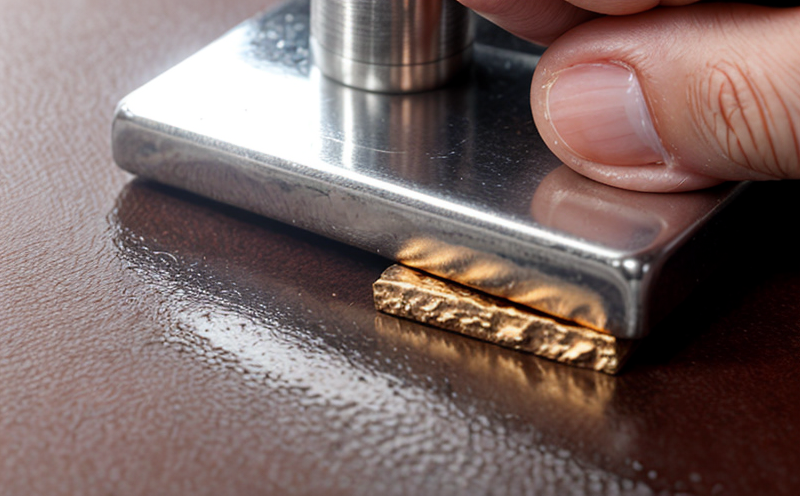EN 12338 Hardness Testing of Base Metals
The EN 12338 standard specifies the method for determining the hardness of base metals using a Vickers microhardness test. This method is essential in quality assurance and compliance, particularly within the mining sector where the integrity and durability of materials are critical.
Base metals such as copper, lead, zinc, nickel, tin, and others play an integral role in various industries including construction, automotive, aerospace, and electronics. Ensuring that these base metals meet specific hardness standards is crucial for their performance and longevity under varying conditions.
The Vickers microhardness test is chosen for its precision in measuring very small areas of the metal surface. It involves applying a known force through a diamond indenter to create an indentation on the specimen's surface, which is then measured using a microscope. The hardness value is calculated based on the indentation depth.
The standard provides detailed guidance on how to prepare specimens for testing, including cleaning and polishing them to ensure accurate results. It also outlines the correct application of force and dwell time required for each test. Compliance with these parameters ensures that the tests are consistent and reliable across different laboratories.
Industry compliance is a key factor in maintaining high-quality standards within mining operations. By adhering to EN 12338, companies can ensure that their base metals meet the necessary hardness requirements set by international standards like ISO 6507-2 for Vickers hardness testing of metallic materials.
The precision and reliability offered by this test make it indispensable in research and development (R&D) efforts aimed at improving product performance. Quality managers and compliance officers rely on these tests to maintain consistent quality throughout production processes. For procurement teams, understanding the hardness properties of base metals is vital for selecting appropriate suppliers who meet stringent specifications.
| Parameter | Value |
|---|---|
| Force Range (kgf) | 2-100 kgf |
| Dwell Time (s) | 15-30 seconds |
| Magnification Factor | ≥ 10x |
| Indentation Size (mm) | 0.2 - 1 mm |
The precision of the Vickers microhardness test allows for detailed analysis and comparison of different batches or types of base metals, which is particularly useful in R&D environments where continuous improvement is paramount.
Understanding the nuances of EN 12338 helps stakeholders appreciate its importance in ensuring product integrity. This knowledge also aids in making informed decisions regarding material selection and process optimization. In essence, adherence to this standard enhances trustworthiness and reliability in both internal operations and external dealings with clients or regulatory bodies.
Industry Applications
- Mining: Ensuring the durability of mining equipment components.
- Aerospace: Verifying the strength of fasteners and other critical parts.
- Automotive: Testing the hardness of engine components for optimal performance.
- Electronics: Assessing the integrity of connectors and circuit boards.
Eurolab Advantages
We at Eurolab pride ourselves on providing comprehensive testing services that go beyond mere compliance. Our advanced facilities equipped with state-of-the-art Vickers hardness testers ensure precise and accurate results every time.
- State-of-the-art equipment ensures consistent accuracy.
- Trained professionals provide expert guidance throughout the process.
- Dedicated support team available for any queries or concerns.
- Prompt turnaround times to meet your project deadlines.
Use Cases and Application Examples
The EN 12338 hardness test is widely used in various sectors where the integrity of base metals is paramount. Here are some specific use cases:
| Application Area | Example Use Case |
|---|---|
| Mining | Testing the hardness of drill bits to ensure they can withstand harsh mining environments. |
| Aerospace | Evaluating the hardness of fasteners used in aircraft structures for safety and reliability. |
| Automotive | Assessing the hardness of engine components to enhance performance and longevity. |





